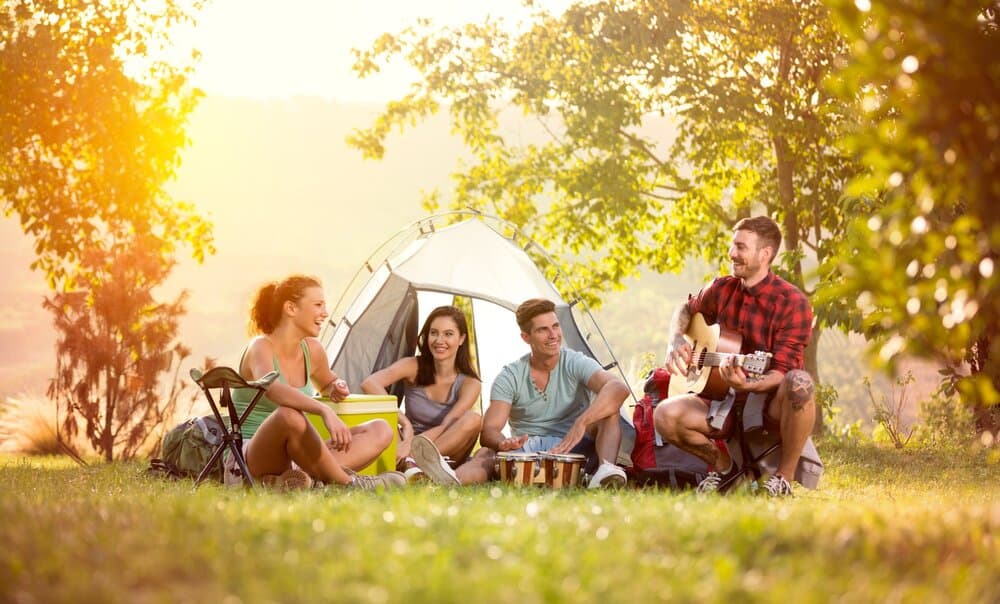Walk-up camping offers a unique blend of spontaneity and adventure for outdoor enthusiasts. This guide will explore what walk-up camping means, its benefits and challenges, and how to make the most of this flexible camping style.
Understanding Walk-Up Camping
Walk-up camping refers to campsites available on a first-come, first-served basis, without the need for advance reservations. It’s a stark contrast to traditional reservation camping, offering flexibility at the cost of there being no guaranteed spots.
Benefits of Walk-Up Camping
Walk-up camping offers several advantages for outdoor enthusiasts. The flexibility for last-minute trips is perhaps the most appealing aspect, allowing spontaneous adventures without the need for advance planning. This can be particularly beneficial for those with unpredictable schedules or who prefer to make decisions based on current weather conditions.
Potential cost savings are another advantage, as walk-up sites often have lower fees than reserved spots, and you avoid reservation charges. Additionally, walk-up camping provides an opportunity to explore less crowded areas. Many popular campgrounds fill up quickly with reservations, but walk-up sites can give you access to beautiful, less-frequented locations that might otherwise be overlooked. This can lead to a more serene and authentic outdoor experience, away from the busier, more touristy areas. For those seeking a mix of adventure and solitude, walk-up camping can be an ideal choice.
Walk-up camping shares some similarities with primitive camping, offering a more rugged and spontaneous experience.
Challenges and Considerations
While appealing, walk-up camping comes with its own set of challenges:
- Uncertainty of site availability.
- Need for early arrival and potential waiting times.
- Limited options during peak seasons.
Finding Walk-Up Campsites
Research is key when planning a walk-up camping trip. Utilize park websites, contact ranger stations, and use online resources to find available sites. Walk-up camping opportunities can be found in national parks, state parks, national forests, and some private campgrounds. Many parks offer a mix of reservable and walk-up sites, so it’s worth checking their specific policies.
Some parks may have a certain percentage of sites set aside for walk-up campers, while others might release unclaimed reserved sites on a first-come, first-served basis. Online forums and camping apps can also be valuable resources for real-time information on site availability and tips from other campers. Don’t hesitate to call the park directly for the most up-to-date information, as policies and availability can change, especially during peak seasons or due to weather conditions.
Preparing for a Walk-Up Camping Trip
Preparation is crucial for a successful walk-up camping experience. Pack all essential gear and extra provisions for potential waiting times. Consider when is the best time to go camping to increase your chances of securing a spot. This includes not only standard camping equipment but also items for comfort during potential wait times, such as camp chairs, extra snacks, and entertainment.
Have a detailed map of the area and be familiar with alternative camping options in case your first choice is full. It’s also wise to have a flexible itinerary, allowing for the possibility of changing locations if necessary. Pack layers of clothing to accommodate varying weather conditions, as walk-up camping might mean adapting to unexpected environments. Lastly, ensure your vehicle is well-maintained and has a full tank of gas, as you may need to drive to multiple locations to find an available site.
Walk-Up Camping Etiquette
Respect campground rules and other campers, and practice Leave No Trace principles. Building good relationships with campground hosts can also be beneficial.
Alternatives to Traditional Walk-Up Camping
If traditional walk-up camping isn’t available, consider these alternatives:
- Dispersed Camping: Camping outside of designated campgrounds, often in national forests.
- Backcountry and Walk-In Camping: More remote options require additional preparation.
Tips for Successful Walk-Up Camping
Success in walk-up camping often comes down to preparation and adaptability. Having backup plans is crucial; research alternative campgrounds or dispersed camping areas in the vicinity of your preferred site. This way, if your first choice is full, you have other options readily available. Flexibility with location and dates can significantly increase your chances of finding a spot.
Consider camping on weekdays instead of weekends, or explore less popular areas that might offer similar experiences with better availability. Utilizing cancellations and last-minute availability can also be a winning strategy. Some campgrounds release canceled reservations at specific times, so check with the park office about their policies.
Additionally, arriving early in the day, especially during check-out times, can give you an advantage in securing a newly vacated spot. Don’t be afraid to politely ask campers if they’re leaving that day; sometimes you can snag a site just as someone is packing up. Lastly, maintain a positive attitude and view the search for a campsite as part of the adventure – you might discover unexpected gems along the way.
For those interested in exploring national parks, check out our seasonal guide to US national parks to plan your trip.
Conclusion
Walk-up camping offers a unique way to experience the outdoors, blending spontaneity with adventure. While it requires more flexibility and preparation than traditional camping, the rewards can be significant. For those traveling with pets, don’t forget to check our guide on dog-friendly national park campsites.
Whether you’re a seasoned camper or new to the outdoors, walk-up camping can provide an exciting and flexible way to explore nature. Just remember to plan ahead, be prepared for challenges, and always respect the environment and fellow campers.

Leave a Reply